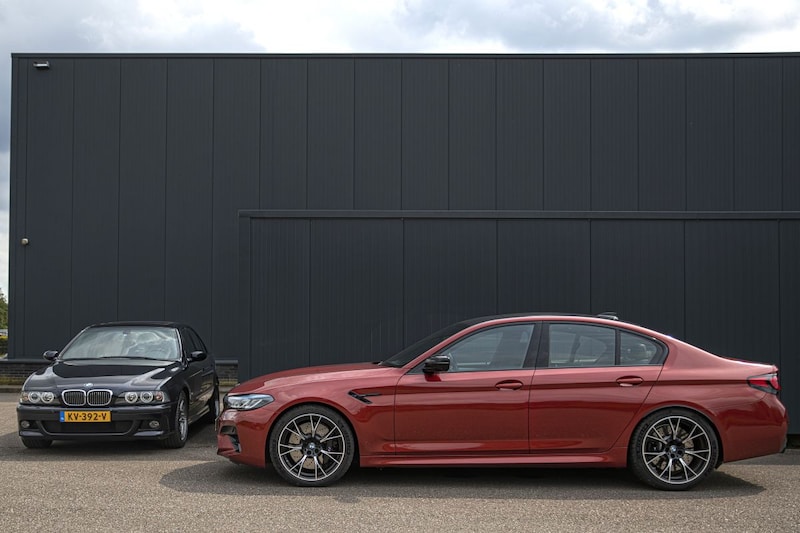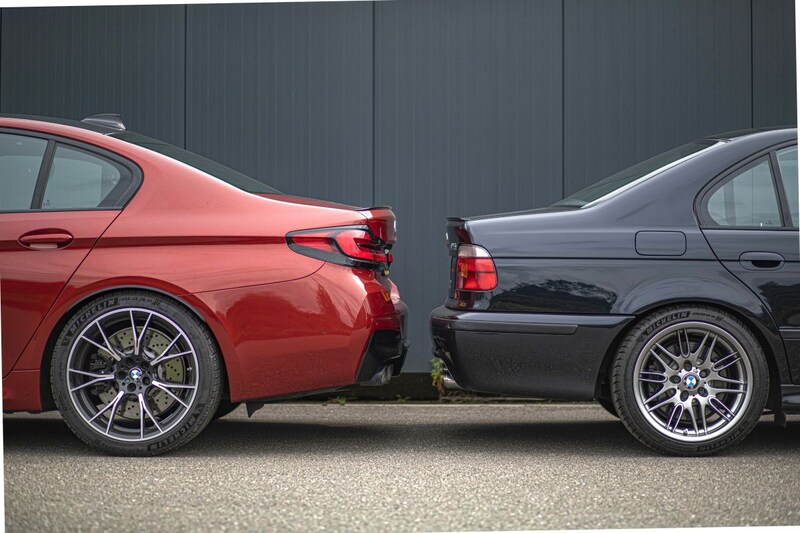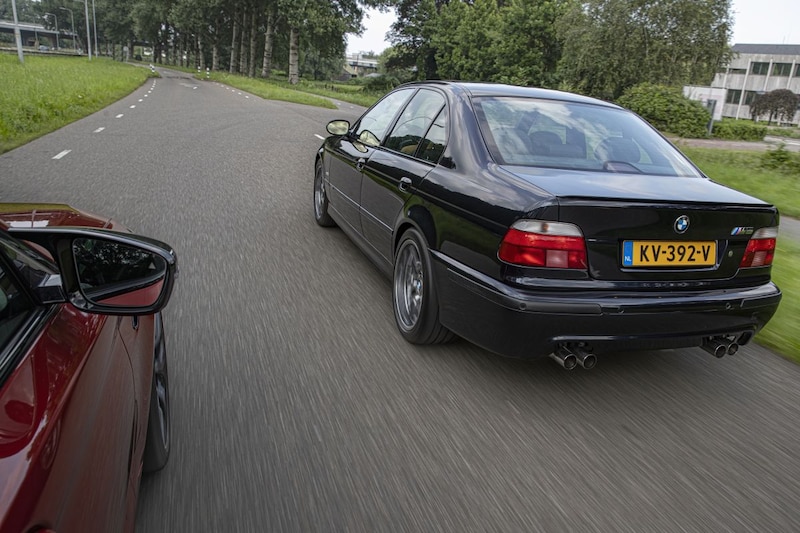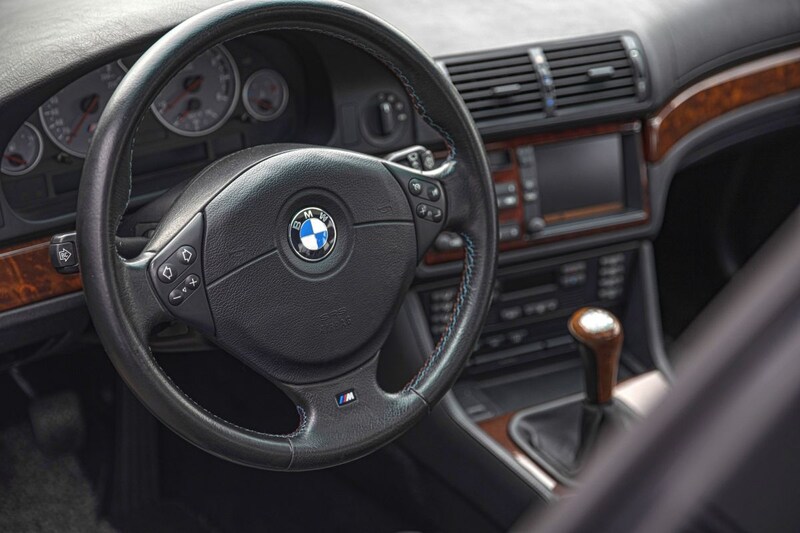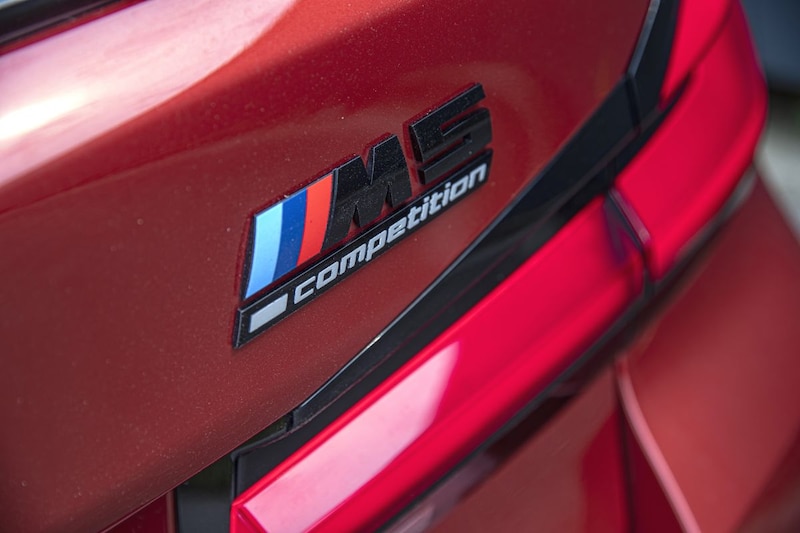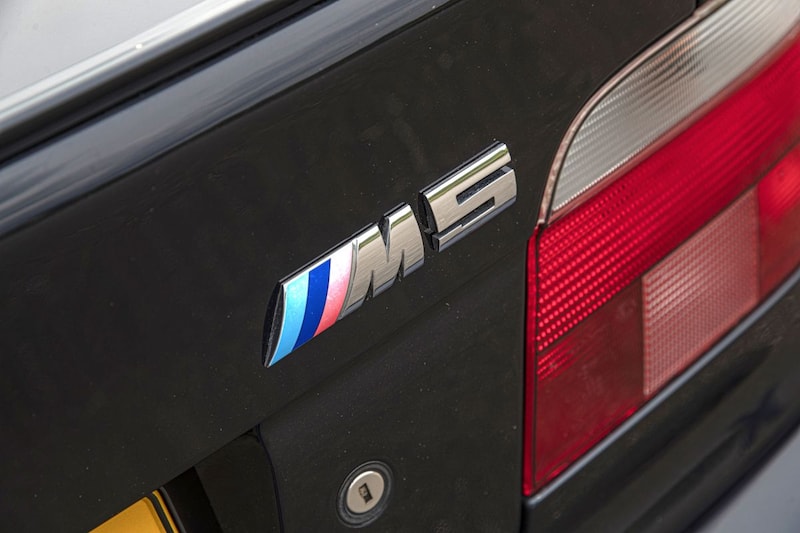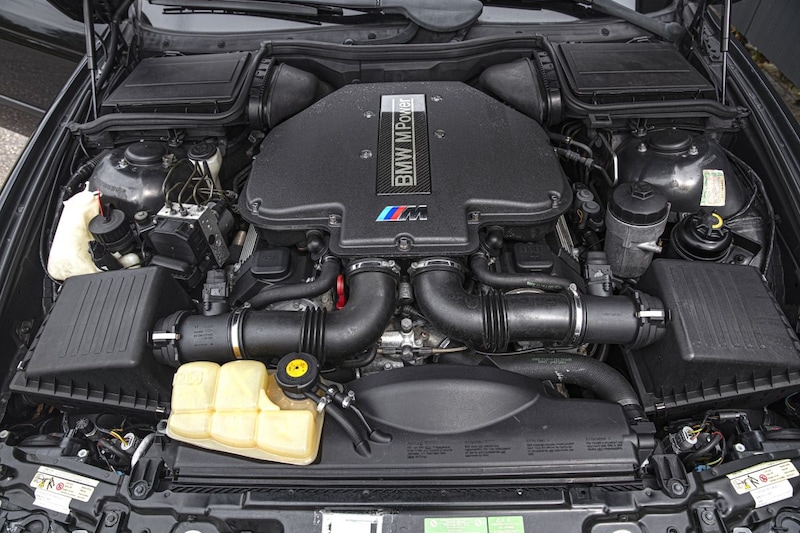Suffering from the desire for more, the BMW M5 grew in every way, starting with the arrival of a V8 in 1998. Did BMW’s iconic sports saloon get better or did it start a turnaround?
That question immediately comes to mind when both cars are side by side for photography. Because next to the E39 from the late 90s, the current (F90) M5 does not look slim and toned, but actually a bit flabby. Only his accessories look sporty, but at the same time a bit flashy. Almost like an obese teenager in an expensive tracksuit with fashionable sneakers who is more interested in Red Bull and pink cakes than exercise. This can only partly be blamed on BMW, because current international regulations dictate car manufacturers to make their models increasingly safer. As a result, manufacturers have ended up in a vicious circle, resulting in increasingly heavier and larger cars.
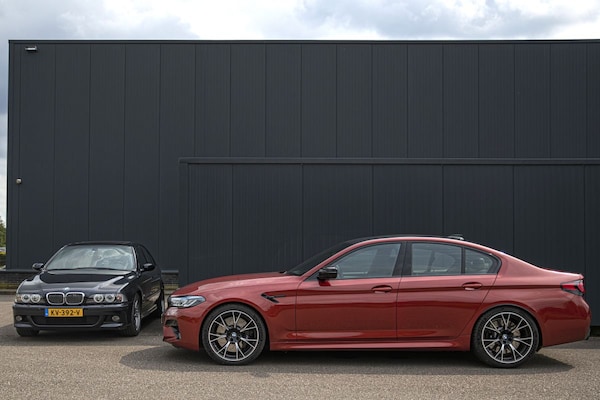
If you look at the dark blue M5 from 1999 from this perspective, you could conclude that it even looks a bit vulnerable with its relatively thin doors and thin window pillars. However, we focus our attention on the sporting aspects. After all, that is what sports sedans are all about and those are also the qualities with which BMW created this segment in the early 1980s.
Six-in-line
In 1984, with the 286 hp 3.5-liter six-cylinder engine from the M1 sports car, BMW transformed the 535i from a powerful and sporty sedan into the fastest production sedan at the time. This marks the birth of the sports sedan. The success of this inspiration turns out to be so great that the recipe may be repeated with the E34, which comes on the market in 1988 as a successor to the 5. Initially the power increases to 315 hp and later even to 340 hp, but the basis of the powertrain remains a high-revving six-cylinder with a manual gearbox and rear-wheel drive. Only in 1998, with the arrival of the third generation M5 based on the E39, will that change. Because he exchanges the six-in-line for a 4.9 V8 that delivers 400 hp and 500 Nm at 6,600 rpm and 3,800 rpm respectively. We find a beautiful example of this generation at The Cool Classic Club in Naarden. Owner Robbert Buijs makes this M5 available to us with only 60,000 kilometers on the clock.
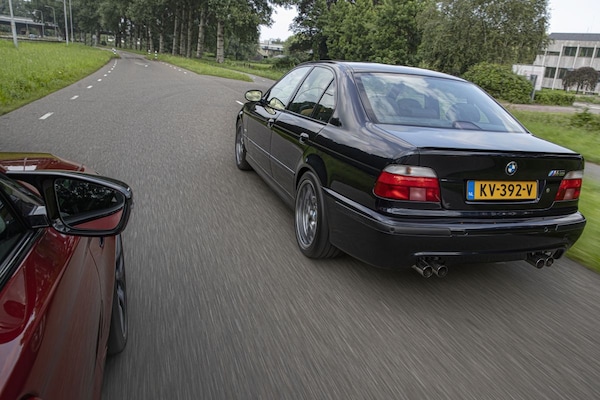
The first thing you notice about the E39 M5 is its nimbleness and the way the bike should be handled. We’ve been driving the new M5 for several days at that point, so we’ve gotten used to the fact that there’s an abundance of power available at any speed and at any rpm. However, the old V8 has to get up to speed first and only from about 4,000 rpm does the third generation M5 start to come to life. Pulling out further not only produces a sharper and even more beautiful exhaust note, but also a firm push in the back when the maximum of 400 hp goes towards the rear wheels. This engine characteristic is a feature that the BMW M models have always been known for, but unfortunately this has changed significantly with the arrival of the turbocharged engines in the M5 and M3. A power of 400 hp may not be much more by today’s standards, but the shrill V8 in combination with the manual six-speed gearbox make the driving experience all the more intense. That experience is at a much higher level with this package than with the seething fast F90. In it you only have to floor the accelerator to be fired with an aggression that actually better suits a thoroughbred sports car.
The miles go by under the E39 and I’m getting more and more captivated by this analog sensation, characterized by the transparent steering and the beautifully linear power build-up of the V8. In addition, memories come to mind of BMW’s 2001 and 2002 online advertising campaign. In the episode Star, Clive Owen drives as a driver through a city center with Madonna helplessly rolling in the back seat. Of course we don’t make it as crazy as in this video, but it does give some indication of how I should drive if I want to have a chance to keep up with the new M5. It doesn’t seem to make any effort and sits in my mirrors filling the screen or disappears like a speck on the horizon. To better understand the differences, I step behind the wheel of the F90 a few times for variety. What is particularly striking is how easy and effortless this car can be driven at high speeds. Boring is not the right way to describe it, because with 625 hp and 750 Nm the experience is anything but monotonous, but due to the unprecedented good electronics, the four-wheel drive and the chassis technology you have to go irresponsibly fast to experience the same tension as in the E39.
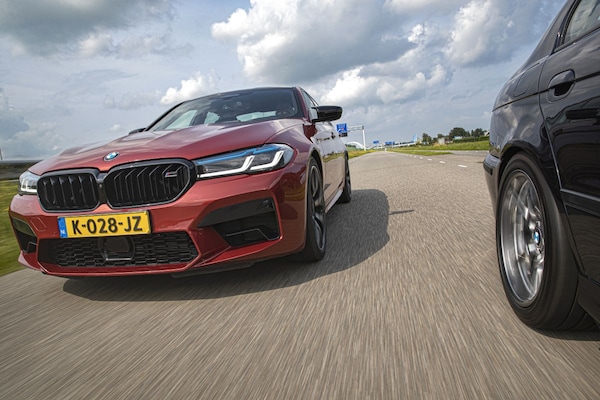
It is a difficult matter to determine whether the current M5 still has the same characteristics as its predecessor. With 225 hp and 250 Nm extra, the F90 quickly appears to be a considerably more exciting and sensational car, but when we leave out that excess, it turns out that there is more going on. The boundaries of both generations are very far apart and especially under normal circumstances you can say that the M5 has become less challenging. You do get excellent dynamics in return, which can be adjusted in great detail via the Driving Experience Control, but better and faster is not always more fun or exciting. The driver can meticulously determine how he can adjust the steering feel, the shifting characteristics, the suspension setting, the throttle response and thus the full character of the car.
However, I catch myself several times turning the M5 much harder than intended, showing that you have to go very far to experience the F90 as a really exciting car. This is also partly the result of the four-wheel steering, which means that the rear turns remarkably short in tight bends. The large sedan is therefore capable of changes in direction that are unheard of for a car of almost five meters and a weight of almost two tons. It should be noted that we opted for the M5 Competition, which is a bit sharper and faster than the regular M5, but not as potent as the CS. We chose this version over the M5 CS because we wanted to stay as close as possible to the traditional sports saloon concept. The Competition sits neatly between the standard M5 and the hardcore top model. We didn’t want to experience the M5 as a very hard and stripped track monster, but rather as a somewhat comfortable and spacious four-seater that excels in performance and handling, without immediately sacrificing everything.

Slightly less
And that brings us to the everyday qualities of these two M5 generations. If we look at them as sedans for commuting, then the old M5 is still a remarkably comfortable and pleasantly steering four-seater, provided you do not place too much emphasis on modern electronics and gadgets. The F90 is better in every way, but that’s not surprising for a car that is almost a quarter of a century newer. As a result, the M5 as a concept still offers an unprecedented good balance between sporty handling and comfort and that is where the model once made a name for itself and trumped its competitors. The big difference between the old and the new M5 is mainly the transparency and the linear power development of the drivetrain. Despite enormously increased performance, you should especially get to know the M5 well. The best way to explore its limits is during a BMW driving training session on the track. The M5 has become so incredibly good that it has actually overshot its target. The sporting qualities that make a sports sedan an entertaining phenomenon can no longer be enjoyed to the full in situations where you would wish that. It sounds contradictory, but perhaps BMW should pay less attention to the competition with the next M5 and instead take an example from its own past.
Do you now feel like a BMW M5 E39, view the range on our site here.
– Thanks for information from Autoweek.nl

